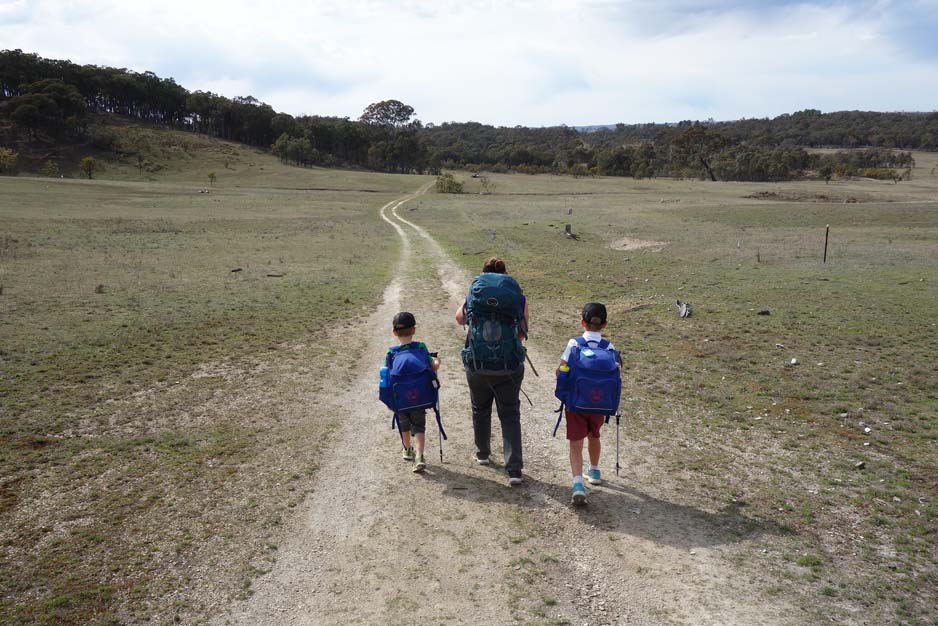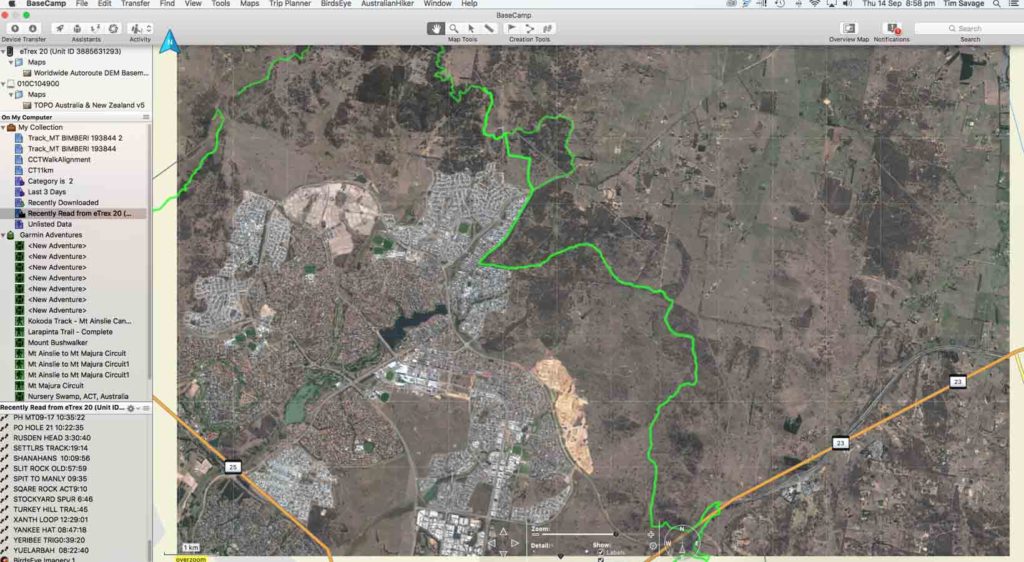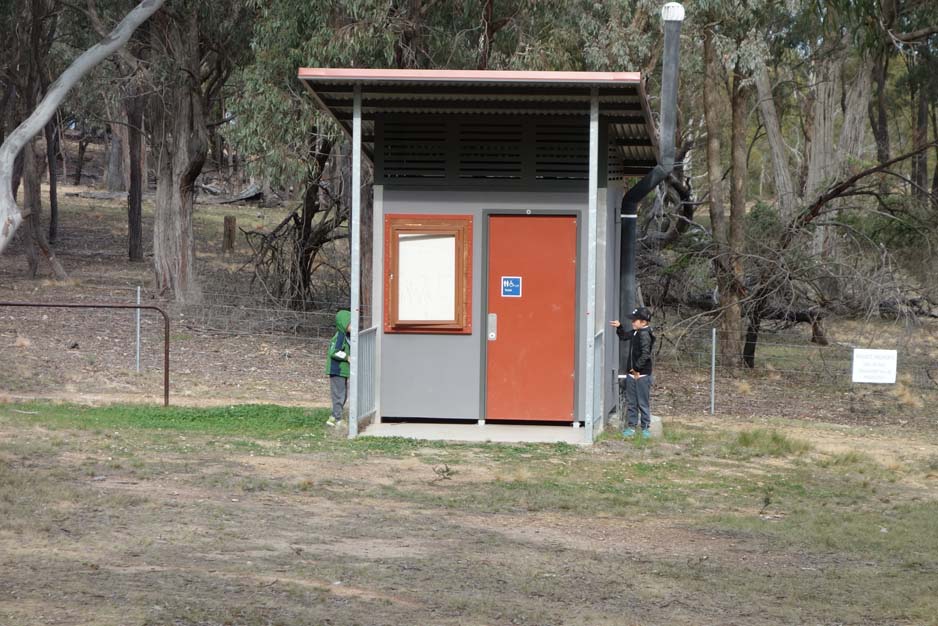Hiking with Kids – 8 Tips for Survival
Hiking practice
Hiking is a fantastic past time and one that can be enjoyed by all ages and fitness levels. Those of you who have lots of hiking experience will no doubt want your younger family members to enjoy the same experiences you have when out on the trail. Others may not have much hiking experience – just a house full of energetic young people and you want to get them outdoors to channel all that energy.
Whether you’re well versed in hiking or not, there are a few things to appreciate when starting your hiking adventures with younger ones. This article provides some tips to help you optimise the enjoyment of those first forays outdoors and hopefully, after a few positive experiences you’ll continue your adventures.
This article is pitched at hiking with children in the five to 12 age bracket. Modify this guidance for younger children by shortening the distance and simplifying the activity, and place greater emphasis on personal responsibility for older kids.
Listen to the podcast episode of this article at episode 40
Listen to podcast episode 41 where we take our niece and her sons aged 6 and 9 on their first overnight hiking and camping trip.
1. Get them Involved
I spent a lot of time in the bush with my family as a kid but I didn’t really enjoy the experience. Looking back, I remember a lot of time ‘hanging about’ while adults did ‘adult stuff’. In those days, participation had a very different meaning and thankfully modern approaches to raising children have abandoned the ‘be seen and not heard’ mantra.
While there is a serious side to hiking preparation i.e. being safe, not getting lost, not getting caught out by the weather etc., there is also opportunity to actively involve kids particularly in terms of deciding where you’re going to go, what you’re going to do there and how you’re going to do it.
The goal is to build their enthusiasm for hiking so engage early with them but remember to keep it interesting, fun and simple. If you succeed you’ll immediately know – there is no hiding the look of sheer boredom on a child’s face!

Rather than having them just tag along involve them in the hike planning, explaining in easy to understand terms what you are doing and why
2. Distribute the Load
This tip follows on from the first. Children need to feel they are part of the team so get them to help with the carrying. Of course, this needs to be appropriate for their age and size. I shudder when I see kids making their way to school struggling with giant, heavily laden back packs – the packs are usually way too big and way too heavy.
While we usually get everyone to carry their personal items, it’s also a great idea to foster sharing. The trick here is to work out what items interest them and ask them to carry those things. Think about getting a child to carry their snacks. If there are several children in your group, one could carry part of the lunch and another part of the dinner. They will be doing something important and will feel appreciated.
I sometimes think we try to anticipate every eventuality when we involve kids in hiking but there is no need. If you have a good hiking regime in terms of your layering system, safety system etc., it will apply equally well to hiking with children. While you do need to be prepared for the unexpected, don’t overdo it and don’t have too much load to share.

Kids need to carry a minimal load to be involved but not so much it is too heavy – they will hate what they are doing. In this image, the boys are using their school packs and are only carrying a jacket, sleeping bag and their own snacks. Oh and don’t forget the football! The adults are carrying all the other gear needed for an overnight hike
3. Pick Your Distance
The main message here is that it’s about them, not you. You might regularly travel 15 km on foot in record time but the reality is that won’t happen even if you’re hiking with older kids. So, select an easily achievable distance, have an extension in mind if the opportunity arises and be prepared for all your planning to go out the window!
And remember, it’s about ‘the journey, not the destination’. If you hear ‘are we there yet?’ a few too many times, you need to rethink your distance or take advantage of that short side trail that opportunistically appears!

While kids have lots of energy, keep the hike short when just starting out. You may be able do a chosen hike easily but remember they are small in size and may not be used to walking further than a walk to school. Be realistic and try to keep it under 3 km at the longest for smaller kids on their first hike
4. Share the Lead
Everyone likes the feeling of being in charge and this also applies to kids. Break your hike into sections and ask the children to take turns in leading. They will love leading the adults around!
Breaking up the journey like this will help them stay interested. The sections of the hike should be easily understood and easily visible. For example, you can ask someone to lead the group to the large tree ahead or down to the stream you point out in the distance etc.
Make sure you also ask them to stay on the trail and establish a ‘not too fast, not too slow’ pace. When kids lead the way on the trail, they will tend to race off, so slow them down by asking them to keep an eye out for interesting things to show others. And better still, develop your skill at spotting interesting things and spend the time sharing snippets of information – they won’t want to miss anything so they will stay closer.

Kids like to feel special so explain what their role is and let them lead the group. If you have more than one child in your group, remember to swap over at some stage. Don’t forget that we live in a land full of snakes so you will need to explain this, keep a sharp eye out ahead of the child in the lead and stay close just in case

Here the two boys are looking at the sign that explains the vista below. They are also trying to find their house (unsuccessfully) somewhere in the valley
5. View the World with their Eyes
Have you ever spent time sitting on the floor playing with kids, kneeling to be at their level when talking with them, or following the exact line of a child’s gaze when they’re looking at something? When you do these things, you can’t help but see the world in a different way. I often think we’d be better adults if we hadn’t lost this ability.
Be prepared to spend time understanding what they are seeing and re-igniting your fascination with, what sometimes appear to be, random thoughts and details. You will love it and the kids will enjoy having a ‘big kid’ with them at least for a few moments! Remember that little kids see the world from around your waist height so keep this in mind when pointing things out.

I have an interest in macro photography and I’m always on the lookout for the small stuff. This can be a game for the kids to find stuff before you do
6. Be Fun to have Fun
I have deliberately avoided words like learning, teaching and guiding in this article. There is obviously an element of this – we want kids to develop their hiking understanding and skill so they will want to do more hiking with you – right? That is understandable.
Kids learn best when they’re having fun. So, put fun at the centre of your hiking and they will learn, develop their understanding and build their skill. Most important, they will also want to go hiking with you again!

Young boys and toilet humour!

Happy just to kick a ball around but also happy to help out with chores like putting the tent up and filtering the water

Even bike racks become an object for a game – and yes, the adults joined in
7. Pack your Sense of Humour
Sometimes we get caught up in all the adult things we know and what we should and shouldn’t do. Does it really matter if the little one carrying the lunch proudly produces from their pack a bunch of crushed biscuits or squashed fruit? It will still taste the same.
What if you don’t make the distance? Or you must return to the car early because someone slipped in the mud?
Stuff can, and certainly does, happen when you’re hiking with kids so adopt an attitude that helps you laugh everything off.
8. Feel the Vibe
If you’ve attempted a few hikes with kids and it’s not going right, your frustrations are increasing and their interest is decreasing, then you need to think through what is happening.
When you enjoy something, you want others to enjoy it too. It’s a form of self-affirmation and when others don’t enjoy what you like, you feel disappointed. But remember, it’s not about you, it’s about them.
Talk to the kids about hiking and take note of what they say. What is of interest to them may be quite unexpected. Next time you go hiking with them, focus on the things that interest them. And of course, be alert to their changing interests.
Last Words
Hiking with children can be an incredibly rewarding experience for everyone involved. Often adults need to relearn some ‘kids things’ and develop their skill at fostering fun while also being safe – this can be challenging because safety understandably tends to make us very serious!
There is no guarantee any child will develop your love of hiking, but if you keep these eight tips in mind they may be willing to give it a go a few more times!
Resources
Nature Play Australia provides some excellent resources for both families and schools on getting kids outdoors: